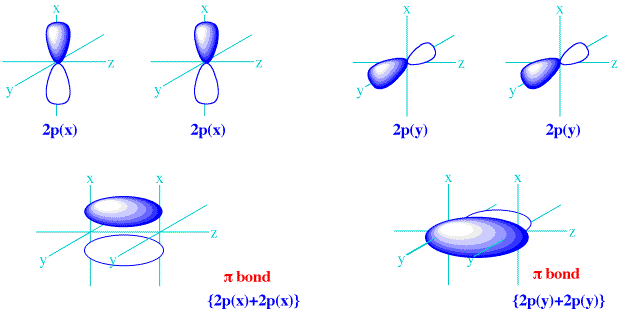

The Ψ 2 term describes how electron density and electron probability are distributed in space around the nucleus of an atom. When Ψ is squared, the resulting solution gives the probability of finding an electron at a particular place in the atom. The challenges raised by the combination of wave particle duality and the Heisenberg Uncertainty Principle are simplified and expressed by Schrödinger’s equation that, when solved, produces wave functions denoted by Ψ. In other words, those that would normally be defined by simple x, y, and z coordinates. Schrödinger solves the probability questionīecause the electron is not a true particle, we cannot describe its movement or location in traditional terms. b.the product of uncertainty in position and momentum of an electron cannot be less than the reduced Planck constant.
#Degenerate atomic orbitals plus#
a.the sum of uncertainty in position plus uncertainty in momentum of an electron must be greater than the Planck constant.The Heisenberg Uncertainty Principle tells us that We have to say that an electron is likely to be found within the atom in certain areas of high probability, but we cannot be 100% sure of its precise position. Because of this, it becomes necessary to describe the position of an electron in terms of probability, rather than that of absolute certainty. This is a very small number that can usually be ignored, but when dealing with a particle as small as an electron, it is significant. (Equation created with CodeCogs online tool.) Equation 1: The Heisenberg Uncertainty Principle equation, where Δx is the product of the uncertainty in position, Δp is the uncertainty in momentum of an electron, and ℏ/2 is the reduced Planck constant. It tells us that mathematically, the product of the uncertainty in position (Δx) and the uncertainty in momentum (Δp) of an electron cannot be less than the reduced Planck constant ℏ/2 (Equation 1). Werner Heisenberg developed a principle to describe this uncertainty, called appropriately the Heisenberg Uncertainty Principle (Heisenberg, 1927). However, the electron is so tiny that even a single photon will influence its trajectory – thus if we shine a beam of light on it to measure its position, the energy of the photon will affect its momentum, and vice versa.

If we shine a light beam on a moving tennis ball, the light has little effect on the tennis ball and we can measure both its position and momentum with a high degree of accuracy. Since we measure the position of objects with light, the small size of the electron introduces a challenge. Waves and measurement uncertaintyĪs we saw in earlier reading, the electron is not a true particle, but a wave-particle similar to the photon. This module further explores these solutions, the position of electrons, the shape of atomic orbitals, and the implications of these ideas. Born took the wave functions that Schrödinger produced and said that the solutions to the equation could define the energies and the most probable positions of electrons within atoms, thus allowing us to build a much more detailed description of where electrons might be found within an atom. The Schrödinger equation was seen as a key mathematical link between the theory and the application of the quantum model. In Atomic Theory III: Wave-Particle Duality and the Electron, we discussed the advances that were made by Schrödinger, Born, Pauli, and others in the application of the quantum model to atomic theory.


 0 kommentar(er)
0 kommentar(er)
